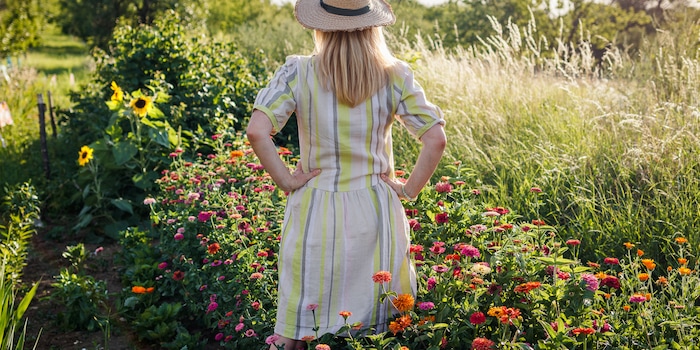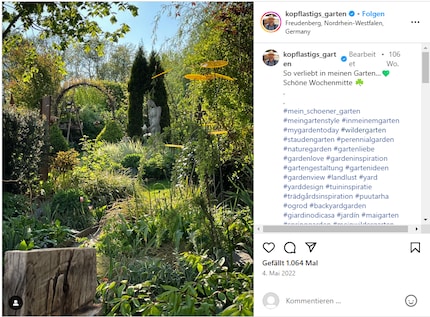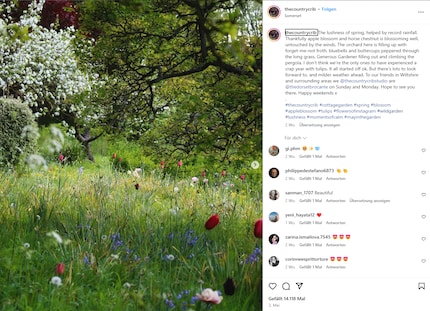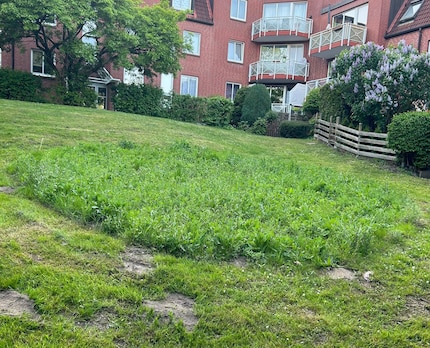Garden design
What do you prefer?
- A. An accurate ornamental garden6%
- B. An enchanted natural garden55%
- C. A mixture of both39%
The competition has ended.

Let nature be nature - that's how you could describe the current trend in garden design. Why unspoilt green spaces are becoming more and more widespread and why they have a right to exist.
A look in the storybook or in the neighbour's garden? It's often difficult to tell the difference. Enchanted gardens and untamed flower meadows are increasingly conquering allotment garden colonies and suburban housing estates. Garden blogs such as Egli Garten and specialist magazines report on the movement towards wild growth. It's also greening up on social media: under #Wildgarden or similar hashtags, Instagram shows lots of wildflower meadows and natural gardens. They are a clear contrast to meticulously trimmed English gardens.


However, the emergence of the natural garden trend is not surprising. Nor is it new. After all, the shape and use of gardens have changed time and again over the course of human history. And so the wild natural garden is celebrating a revival rather than a debut.
In the beginning, gardens fulfilled two main functions: They provided shelter and food. The first ornamental gardens were created from the 16th century onwards - in the Renaissance. They reached their peak in the Baroque period. They developed into grandiose gardens with sculptures, water fountains, symmetrical green spaces and flowerbeds. They acted as showpieces: such as the garden of Waldegg Castle near Solothurn.
In the 19th century, agricultural and forestry aspects appeared in garden design for the first time. At the same time, so-called poor gardens were intended to provide fresh air and proximity to nature for the hard-pressed working class. Later, the poor gardens were transformed into the first allotment gardens for useful and medicinal plants. There were also beautifully landscaped green spaces with a representative purpose - but of course only in front of the houses of the upper classes.
In the post-war period of the Second World War, gardens once again became essential for survival. The population was reliant on food grown by themselves or by others. However, as prosperity increased, the garden lost its importance as a usable area.
Today, self-sufficiency is once again the focus of many people - and with it the aspect of sustainable gardening. The wild garden fits in with this development. It also conveys a different understanding of nature: that it is precisely its untamed, wild and romantic beauty that makes a great garden. A trimmed lawn, on the other hand, is a man-made idea that has little to do with pristine nature.
What do you prefer?
The competition has ended.
No matter what is perceived as more aesthetic, a wildlife paradise offers many advantages:
If you don't have much time for maintenance or want to use the garden more as a place to relax, you should opt for natural gardens. Beginners who are not very familiar with gardening or people who don't have much gardening equipment may also be attracted to wild growth. After all, it can largely manage without the need for caring hands.
Science has long proven that nature does something for mental health. Spending a lot of time outdoors increases your well-being. A new study recently showed how great the influence of a diverse natural environment is on the psyche. This can have a health-promoting, meditative effect, as reported in the specialist journal "Scientific Reports":
"Environments which included a larger range of natural features, such as trees, plants and birdlife were associated with greater mental wellbeing than environments including a smaller range of natural features. These results highlight the importance of policies and practices that support richness of biodiversity for public mental health."
In other words, the more unspoilt and species-rich the environment, the more diverse the plants and trees, the better for your well-being. These positive effects were felt by the almost 2,000 participants for up to eight hours.
Promoting wild growth in your own garden is an article about nature conservation. After all, an untamed plant paradise is a playground for butterflies, bumblebees, grasshoppers and beetles. This in turn benefits other animals such as birds. Wildlife gardens are therefore a form of environmentally conscious and sustainable garden culture that benefits ecological diversity.
The "No Mow May" movement also supports the same cause: To promote biodiversity in your own garden and provide habitats for insects and other animals, there has been an annual call for a mow-free May since 2019. Here I have already reported on the topic.
If you can't keep your hands off the lawnmower or don't want to completely part with your ornamental garden, you should leave a wild growth area in the garden. This is not trimmed and is allowed to grow. My colleague Anne discovered such a wild corner during a walk in her neighbourhood.

Would you like to decorate such an island with wildflowers or do you fancy a flowery wildflower garden? Then it's worth taking a look at our shop. The wildflower seed mix from Hauert is currently extremely popular.
Cat lady and coffee lover from up north. Always on the lookout for «News and Trends».
From the latest iPhone to the return of 80s fashion. The editorial team will help you make sense of it all.
Show all